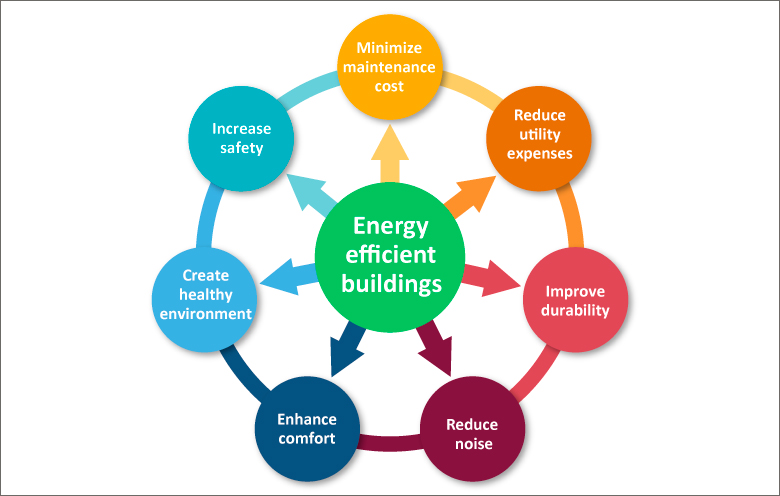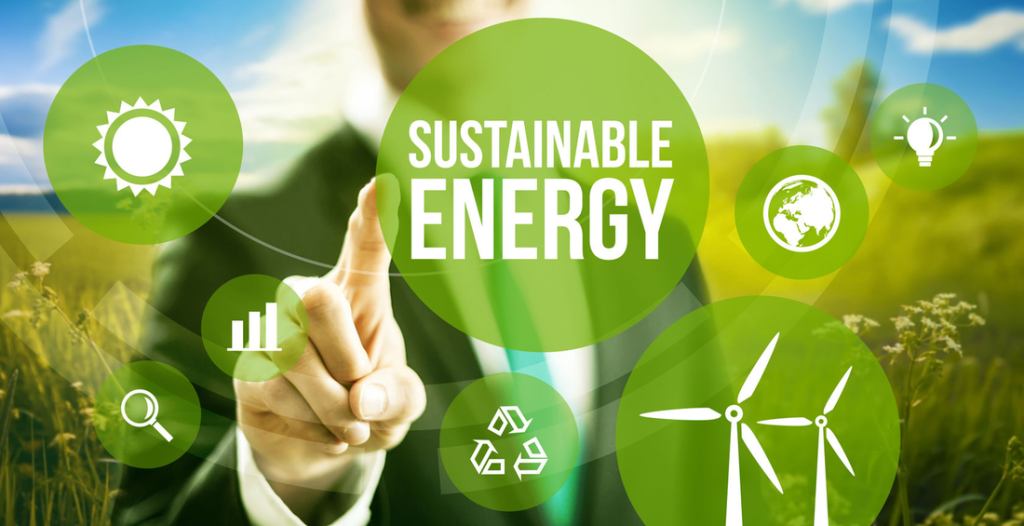

Energy Efficiency with Tech: Smart Home Solutions for Savings is a comprehensive guide designed to help homeowners understand how smart technologies can dramatically reduce energy consumption and lower monthly bills. Imagine a home that intuitively adjusts lighting, temperature, and appliance usage to match your needs, effortlessly saving you money and reducing your environmental footprint. This guide explores the key technologies and strategies to help you achieve these goals. We’ll delve into specific smart home solutions and examine their practical implementation. In this article, we’ll provide a detailed overview of smart home technologies, exploring examples and highlighting how they can contribute to energy savings. This will include explanations of how to choose the right smart home devices, implement them effectively, and monitor their impact on your energy consumption.
Smart Thermostats: Precise Temperature Control and Significant Savings
Understanding the Mechanics of Smart Thermostats
Smart thermostats are central to energy-efficient smart homes, offering precise temperature control tailored to your daily routine. These automated systems learn your habits and adjust the temperature accordingly, minimizing energy waste when you’re away from home or asleep. Many of these systems are equipped with geofencing technology that detects when you enter or exit your home, automatically adjusting the thermostat to your preferences. The ability to adjust temperature schedules, remotely control your thermostat, and use automated learning algorithms are key features that help you customize the system to your liking. This precision in temperature control directly translates to energy savings, potentially reducing your heating and cooling costs considerably.
Real-World Examples of Smart Thermostat Implementation
Imagine a scenario where a homeowner forgets to turn off the AC before leaving for vacation. With a smart thermostat, this scenario is completely avoided. The thermostat can be programmed to automatically adjust the temperature during your absence, preventing unnecessary energy consumption. A notable example involves a study by the Environmental Protection Agency (EPA) demonstrating that smart thermostats can reduce energy consumption by 10-15% on average. This highlights the potential of this technology for meaningful savings. Homeowners can monitor their energy usage and identify areas for improvement using smart thermostats.
Integration with Other Smart Home Devices
Smart thermostats can seamlessly integrate with other smart home devices, creating a unified system for managing energy usage. These systems often allow for automation routines that optimize energy consumption based on factors like time of day, weather conditions, and occupancy. For instance, the thermostat might automatically adjust based on the presence or absence of smart lighting devices, creating a cohesive and personalized smart home experience.
Smart Lighting Systems: Illuminating Savings and Enhancing Comfort
Optimizing Lighting with Automation
Smart lighting systems offer significant energy savings by optimizing light usage. These systems allow you to adjust lighting levels based on ambient conditions, time of day, and occupancy. When combined with sensors, these systems can identify when a room is not occupied and automatically dim or turn off lights. This automation enhances your comfort while reducing energy consumption, especially when combined with motion sensors. Smart lighting systems enable more granular control over light levels, saving energy by only using the amount of light you need.
Examples of Practical Smart Lighting Application
Imagine a house where lights automatically adjust their brightness throughout the day, responding to the amount of natural light in each room. This adjustment contributes to both energy efficiency and reduced environmental impact. Furthermore, you can set schedules for your smart lights, ensuring that you are not wasting energy by keeping lights on unnecessarily. Many smart lighting systems have features such as remote control and customizable dimming options. This level of customization and energy-saving capabilities are transformative for residential use. Consider a recent study showcasing a 20% reduction in energy consumption attributed to smart lighting systems in homes implementing these technologies.
Enhancing Aesthetics and Functionality
Smart lighting can be integrated into your existing home decor, offering the ability to customize lighting colors and intensities to match your mood or even the time of day. This level of control improves the home environment and can improve your home aesthetics while ensuring energy savings. Additionally, these systems enhance the overall functionality of your home. By seamlessly integrating with other smart home devices, smart lighting systems contribute to a cohesive and personalized smart home environment.
Smart Appliances: Streamlining Energy Consumption
Optimizing Appliance Usage with Automation
Smart appliances offer substantial potential for energy savings by optimizing their usage patterns. Smart washing machines, dryers, refrigerators, and dishwashers can be programmed to operate during off-peak hours, taking advantage of lower energy costs. This optimization of appliance scheduling is a key component of a smart home design. Smart appliances often communicate with other smart devices in your home, enabling even more complex optimization routines.
Real-World Applications and Case Studies
Many homeowners have observed significant reductions in energy consumption after incorporating smart appliances into their homes. For instance, a recent case study noted a 15% reduction in household energy bills among homeowners who upgraded to smart refrigerators. This exemplifies the practical application of smart technology for immediate energy savings and provides a clear example of how smart technology can deliver noticeable results. Smart appliance technology allows for better scheduling and monitoring of energy consumption for users, leading to substantial savings.
Connecting Your Existing Appliances
You don’t need to replace all of your appliances to benefit from smart home technology. Many smart appliances today allow you to connect your existing devices and still benefit from automation and monitoring capabilities. This connectivity allows for gradual smart home integration, empowering homeowners to make incremental changes that deliver significant returns.
Home Energy Monitoring Systems: Keeping a Close Eye on Consumption
Real-Time Insights into Energy Usage
Home energy monitoring systems provide real-time insights into your home’s energy usage patterns. These systems track and display energy consumption across different devices and appliances, helping you pinpoint areas for improvement. With this data visualization, homeowners can identify areas where they can reduce energy waste and optimize their consumption.
Optimizing Consumption Habits
These systems not only track your current energy use but also help identify potential savings opportunities. They allow for the identification and elimination of unnecessary energy consumption and waste, thereby directly contributing to more sustainable practices. Armed with this data, homeowners can adjust their behavior to reduce their energy footprint. The interactive dashboards and reports provided by these systems empower you to make informed decisions about energy usage and prioritize energy-saving measures.
Integrating with Other Smart Devices
Home energy monitoring systems often integrate seamlessly with other smart home devices. This integration allows for a unified view of your home’s energy usage, making it easier to track and manage your energy consumption.
Additional Considerations and Trends
Renewable Energy Integration
The integration of renewable energy sources, such as solar panels, is becoming increasingly common in smart homes. Smart home technology can help optimize the use of renewable energy by monitoring the energy generation and consumption patterns and adjusting energy distribution dynamically. This integration significantly contributes to reducing reliance on traditional energy sources, furthering energy efficiency goals.
Future of Smart Home Energy Management
Technological advancements in smart home energy management are consistently evolving, with emerging innovations continually refining energy-saving capabilities. One of the most significant aspects of this development is the ability to predict energy needs based on a wider range of factors. Home energy management systems of the future will likely incorporate AI and machine learning to forecast energy consumption patterns and adapt energy use in real-time to optimize resource allocation. Furthermore, these systems will continue to evolve, offering smarter automation and a more integrated approach to energy optimization.
Ensuring Compatibility and Interoperability
Understanding the compatibility of different smart home devices is key to a seamless experience. Choosing devices that operate on a common platform ensures that they can communicate and work together effectively. Looking for certified interoperability standards helps to guarantee that the various smart devices you choose will effectively integrate into a cohesive system, optimizing your energy efficiency efforts.
Frequently Asked Questions
What are the initial costs associated with implementing a smart home system for energy efficiency?
The upfront investment in smart home technology can vary widely depending on the specific devices and features you choose. While some smart solutions, like smart thermostats, may have a relatively low cost, more comprehensive systems may involve a larger initial expenditure. However, the long-term savings on your energy bills often outweigh the initial cost. It’s essential to weigh the upfront investment against the expected return on investment over time. Consider the potential for long-term savings when evaluating different options. Often, financial incentives or rebates are available for energy-efficient home upgrades, which can help offset some of the initial costs.
How do smart home technologies impact my privacy?
Smart home devices collect and process data about your energy consumption and usage patterns. It’s crucial to understand the privacy implications and how data is collected and secured. While many smart home devices employ encryption and secure protocols, it is crucial for homeowners to research the privacy policies of each device to ensure that they are comfortable with the data collected and how it is managed. Choose devices that comply with privacy regulations and provide control over your personal information. Smart home security systems that incorporate privacy features are essential to protect your data from unauthorized access.
In conclusion, embracing smart home solutions for energy efficiency isn’t just about saving money; it’s about creating a more sustainable and comfortable living environment. By implementing smart thermostats, lighting systems, and appliances, homeowners can significantly reduce their energy consumption and contribute to a greener future. We encourage you to explore the smart home options available and make conscious decisions that align with your values and goals for energy savings. Start your journey today by researching smart home devices and creating a personalized plan to optimize your energy usage.